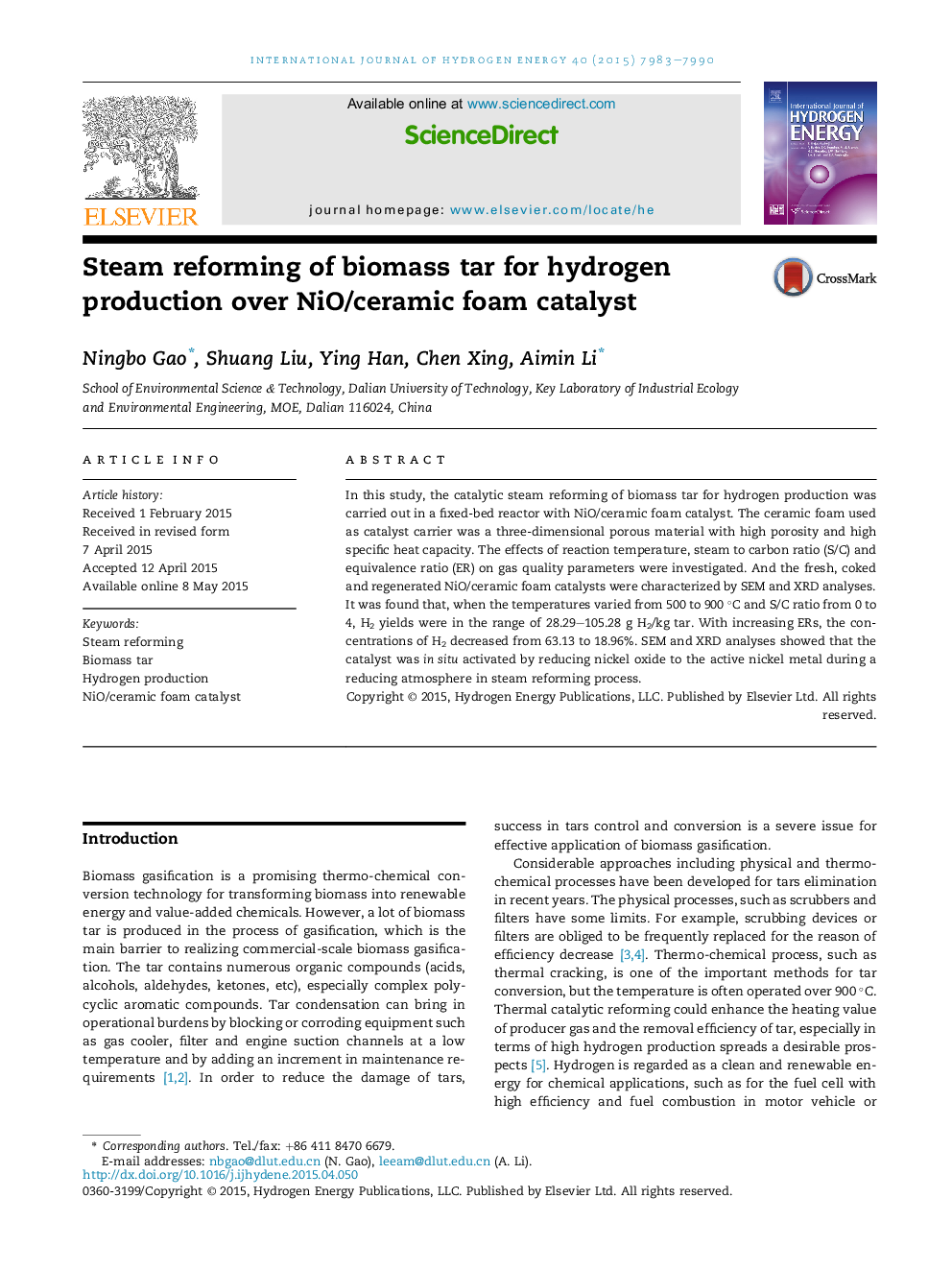| Article ID | Journal | Published Year | Pages | File Type |
|---|---|---|---|---|
| 1270796 | International Journal of Hydrogen Energy | 2015 | 8 Pages |
•NiO/ceramic foam catalyst was employed for tar reforming.•The maximum hydrogen yield reached 105.28 g H2/kg tar at 700 °C and S/C = 1.•High ratio of S/C was in favor of hydrogen yield, and the increase of ER caused the hydrogen yields decrease.•The catalyst was activated in situ and the carbon deposition can be removed by regular in situ oxidization.
In this study, the catalytic steam reforming of biomass tar for hydrogen production was carried out in a fixed-bed reactor with NiO/ceramic foam catalyst. The ceramic foam used as catalyst carrier was a three-dimensional porous material with high porosity and high specific heat capacity. The effects of reaction temperature, steam to carbon ratio (S/C) and equivalence ratio (ER) on gas quality parameters were investigated. And the fresh, coked and regenerated NiO/ceramic foam catalysts were characterized by SEM and XRD analyses. It was found that, when the temperatures varied from 500 to 900 °C and S/C ratio from 0 to 4, H2 yields were in the range of 28.29–105.28 g H2/kg tar. With increasing ERs, the concentrations of H2 decreased from 63.13 to 18.96%. SEM and XRD analyses showed that the catalyst was in situ activated by reducing nickel oxide to the active nickel metal during a reducing atmosphere in steam reforming process.
Graphical abstractFigure optionsDownload full-size imageDownload as PowerPoint slide
